How Did Hindu God Shiva Get His Third Eye?
David Tee - AncientPages.com - The story behind Shiva and his third eye is an interesting one. There are many theories about his eye and what it does. But most of those stories cannot be substantiated.
Two main theories are what most people tend to think about when talking about the purpose of the third eye of Shiva.
 Statue of Shiva in the lotus position at Murudeshwar. source
Statue of Shiva in the lotus position at Murudeshwar. source
Is It Wisdom Or A Missile?
One theory has it that the third eye of Shiva is a missile ready to be fired on the world and destroy it. When the eye opens then Shiva is angry, and he becomes threatening until the other gods honor him and beg him to calm down. This is the people’s conclusion how Shiva became known as the destroyer.
But there is another theory. The third eye has come to represent wisdom. The normal right and left eye are for any physical activity Shiva did in this world. Because he was an ascetic, the third eye came to represent his spiritual nature and power.
How Did Shiva Get His Third Eye
After the death of his lover Sati, Shiva withdrew from all society and in pain, he started to meditate. His meditation was so deep that the other gods could not wake him, even after Sati was reborn as Parvati.
Finally, the gods sent Kama, the god of love, to wake Shiva. Kama thought that using one of his arrows would do the trick but after the arrow struck Shiva, the third eye opened up and sent a flame engulfing Kama.
When Shiva’s meditation was broken, he did experience desire for Parvati but instead of letting his desire win, Shiva’s anger became greater and a third eye opened up in his forehead. This is the story of how Shiva got his third eye. It just appeared when he let his anger overrule his desire.
The Significance Of The Third Eye
The origin story of the third eye brings with it a deeper meaning. The third eye is to represent the rejection of desire. To obtain the status of bliss one must stay away from desire. The reason for Shiva’s conclusion is that he knew that when the object or person desired goes away, intense pain and sorrow follow.
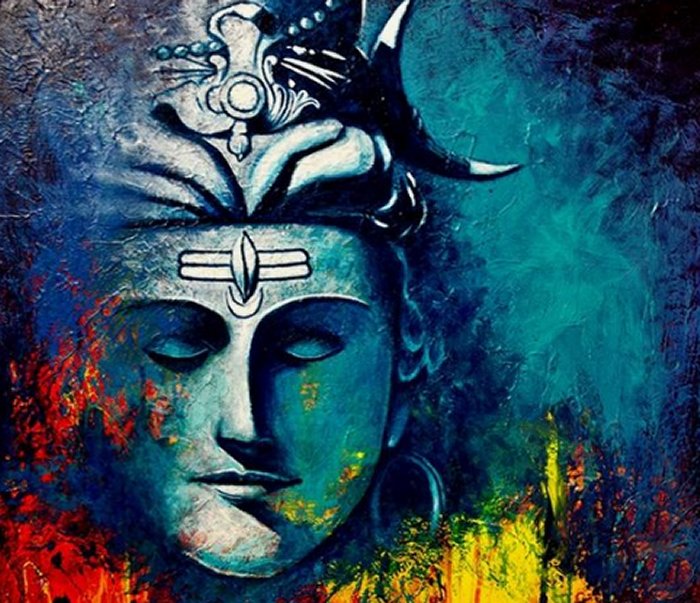 image source
image source
To stay happy, then, one must stay away from desire and not desire anything. There is another side to the third eye that has a more sinister meaning.
This definition comes through the story of Andhaka.
Andhaka was formed through the drops of perspiration from Parvati’s hands and the child was adopted by Asura, a follower of Shiva. When Andhaka grew up, he wanted to conquer the world but he fell for the beauty of Parvati. His romantic pursuit was ended when he was killed by Shiva.
The lesson derived from this story is that the rejection of all desire has dark ramifications for the world. Without desire, there can be no reproduction and the world will cease to be.
The Power Of The Third Eye
Shiva’s third eye seems to have no end to its power. One story says that Parvati covered Shiva’s eyes with her hands. When this happened the light in the universe was turned off.
Shiva then opened his third eye and brought light back to the universe.
Another story has it that with the end of each Mahayuga (maha yuga) cycle, the world is destroyed. It is thought that it was Shiva using his third eye to destroy the world. But his third eye does not just destroy the world. It uses its power to create new worlds for everyone to enjoy.
The Nature Of Shiva’s Third Eye
Shiva’s third eye is seen to mean different things. It is a powerful weapon that when opened can be used to destroy the life of gods, man and worlds. It is more than a missile but an instrument of destruction.
But it is also a symbol with two meanings. One meaning shows that it is used to reject desire and avoid personal pain. The other meaning is that to follow the first means that the world will come to an end because no one will desire anyone and reproduce.
Written by – David Tee AncientPages.com Staff Writer
Copyright © AncientPages.com All rights reserved. This material may not be published, broadcast, rewritten or redistributed in whole or part without the express written permission of AncientPages.com
More From Ancient Pages
-
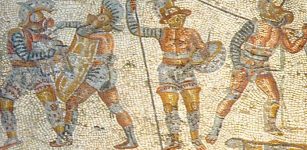 Were There Gladiators In Roman Britain? An Expert Reviews The Evidence
Featured Stories | Mar 14, 2023
Were There Gladiators In Roman Britain? An Expert Reviews The Evidence
Featured Stories | Mar 14, 2023 -
 Secrets Of The Jungle And Hidden Ancient Treasures Of The Serpent People
Featured Stories | Feb 29, 2020
Secrets Of The Jungle And Hidden Ancient Treasures Of The Serpent People
Featured Stories | Feb 29, 2020 -
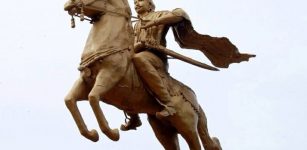 Powerful Chola Rulers Of Southern India: Patrons Of Architecture, Art And Literature
Civilizations | May 4, 2017
Powerful Chola Rulers Of Southern India: Patrons Of Architecture, Art And Literature
Civilizations | May 4, 2017 -
 Unknown Saxon Village And Bronze Age Artifacts Found Near Ely, Cambridgeshire
Archaeology | Sep 18, 2023
Unknown Saxon Village And Bronze Age Artifacts Found Near Ely, Cambridgeshire
Archaeology | Sep 18, 2023 -
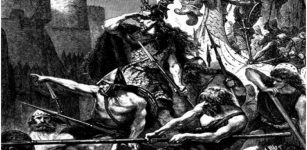 On This Day In History: Viking Forces Laid Siege To Paris – On Nov 25, 885
News | Nov 25, 2016
On This Day In History: Viking Forces Laid Siege To Paris – On Nov 25, 885
News | Nov 25, 2016 -
 Controversial Ancient History: Did Humans Evolve From Reptilians? The Serpent Connection From Ancient Myths To Modern Science
Featured Stories | Jul 23, 2015
Controversial Ancient History: Did Humans Evolve From Reptilians? The Serpent Connection From Ancient Myths To Modern Science
Featured Stories | Jul 23, 2015 -
 Tomography And Radiocarbon Dating Used To Examine Australian Aboriginal Knife
Archaeology | Jul 3, 2023
Tomography And Radiocarbon Dating Used To Examine Australian Aboriginal Knife
Archaeology | Jul 3, 2023 -
 Conwy Castle In Snowdonia: Outstanding Medieval Fortification In Europe
Featured Stories | Oct 16, 2018
Conwy Castle In Snowdonia: Outstanding Medieval Fortification In Europe
Featured Stories | Oct 16, 2018 -
 Startling Evidence Modern Humans Lived In The Mandrin Cave 56,800 Years Ago Where They Met The Neanderthals
Archaeology | Mar 12, 2022
Startling Evidence Modern Humans Lived In The Mandrin Cave 56,800 Years Ago Where They Met The Neanderthals
Archaeology | Mar 12, 2022 -
 London Was Always A Multicultural City, DNA Research Confirms
Archaeology | Nov 26, 2015
London Was Always A Multicultural City, DNA Research Confirms
Archaeology | Nov 26, 2015 -
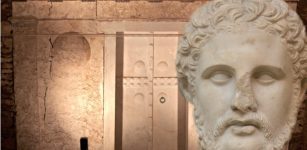 Royal Tombs Of Alexander The Great’s Family At Vergina, Greece Finally Identified
Archaeology | Jan 31, 2024
Royal Tombs Of Alexander The Great’s Family At Vergina, Greece Finally Identified
Archaeology | Jan 31, 2024 -
 Neanderthals Cared For Each Other And Survived Into Old Age – Study Shows
Evolution | Nov 2, 2023
Neanderthals Cared For Each Other And Survived Into Old Age – Study Shows
Evolution | Nov 2, 2023 -
 Stone Tools In Lapa do Picareiro Cave Reveal Modern Humans Reached Western Parts Of Europe 5,000 Years Earlier Than Previously Thought
Archaeology | Sep 30, 2020
Stone Tools In Lapa do Picareiro Cave Reveal Modern Humans Reached Western Parts Of Europe 5,000 Years Earlier Than Previously Thought
Archaeology | Sep 30, 2020 -
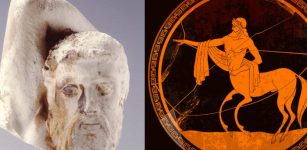 Why Is This Centaur Head A Scientific Mystery?
Archaeology | Jan 19, 2024
Why Is This Centaur Head A Scientific Mystery?
Archaeology | Jan 19, 2024 -
 On This Day In History: ‘Bloody Sunday’ In Northern Ireland – On Jan 30, 1972
News | Jan 30, 2017
On This Day In History: ‘Bloody Sunday’ In Northern Ireland – On Jan 30, 1972
News | Jan 30, 2017 -
 Remarkable Discovery Of Ancient Drilled Bear Teeth In Kansas – How Did They End Up On The Great Plains?
Archaeology | Mar 25, 2022
Remarkable Discovery Of Ancient Drilled Bear Teeth In Kansas – How Did They End Up On The Great Plains?
Archaeology | Mar 25, 2022 -
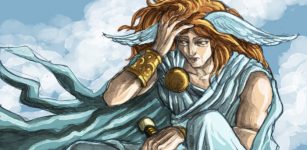 Hypnos: God Of Sleep Who Owns Much Of Our Lives In Greek Mythology
Featured Stories | Mar 22, 2021
Hypnos: God Of Sleep Who Owns Much Of Our Lives In Greek Mythology
Featured Stories | Mar 22, 2021 -
 Corsica: ‘The Island Of Statue-Menhirs’ – Where Humans Lived At Least 7,000 BC
Featured Stories | Feb 28, 2024
Corsica: ‘The Island Of Statue-Menhirs’ – Where Humans Lived At Least 7,000 BC
Featured Stories | Feb 28, 2024 -
 Mystery Of The Banshee – Is The Celtic Death Messenger Linked To The Tuatha De’Dannan Race?
Celtic Mythology | Oct 25, 2015
Mystery Of The Banshee – Is The Celtic Death Messenger Linked To The Tuatha De’Dannan Race?
Celtic Mythology | Oct 25, 2015 -
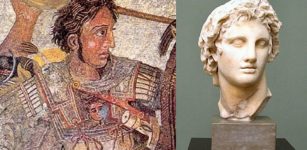 Why Didn’t Alexander The Great’s Body Show Signs Of Decomposition For Several Days? A Never-Before Suggested Explanation – From Scientists
Archaeology | Jan 24, 2019
Why Didn’t Alexander The Great’s Body Show Signs Of Decomposition For Several Days? A Never-Before Suggested Explanation – From Scientists
Archaeology | Jan 24, 2019
